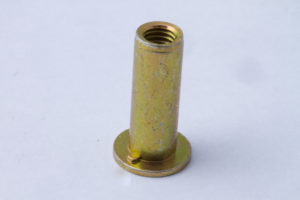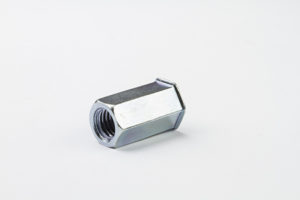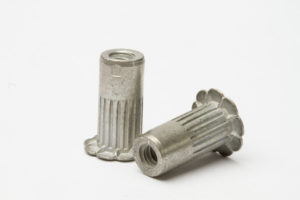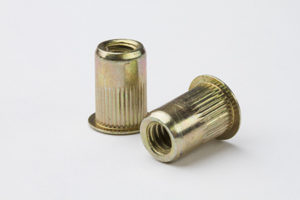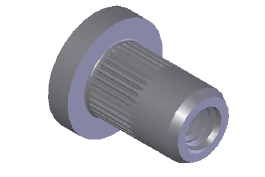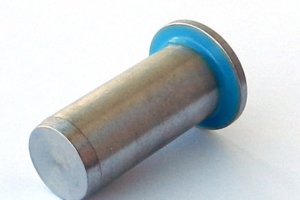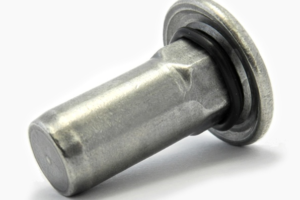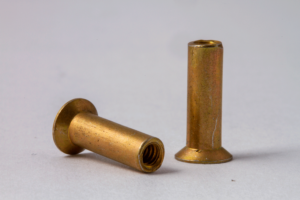By Frank Genovese, Applications Engineer
There are dozens of different body styles of rivet nuts on the market today, including-body, half-hex, and full-hex in shape with further variations to explore from there. However, for as many different body styles, there are also a wide variety of rivet nut flange types as well.
Standard flange types are typically round, large, and vary in thickness depending on whether or not the part is considered “heavy duty” or not. However, in applications calling for more flush installations to the installation pane, smaller (and thinner) flanges are offered as an alternative. For half-hex and full-hex parts, these flanges often take a hexagonal shape.
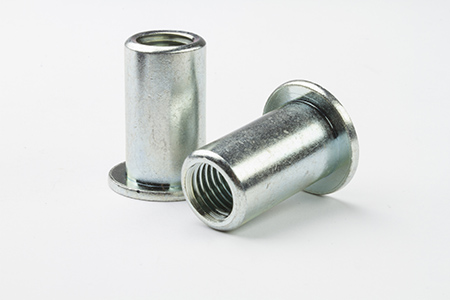
This heavy duty round rivet nut has a thick flange to prevent pull out
For increased spin-out resistance, hexagonal body styles are generally the optimal solution. This requires the ability to create hexagonal holes in your material to ensure a proper installation. If this choice is not available to you, there are flange features that assist as well. Many standard parts are also offered with wedges under the flange, which bite into the material.
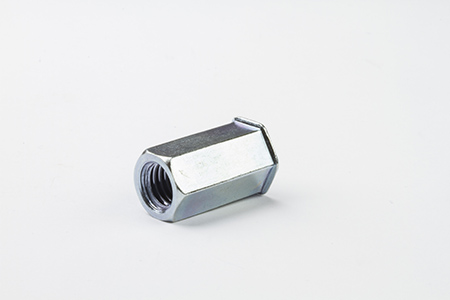
This FHK hex-style rivet nut has a very small flange, but offers superior protection from spin-out
For harder materials that may prove more difficult to bite into, select series of rivet nuts come with a keyway under the flange, which provide another method to further lock the rivet nut into the material after it has been installed. However, the latter method does require the ability to create a corresponding allowance for said keyway in your installation pane.
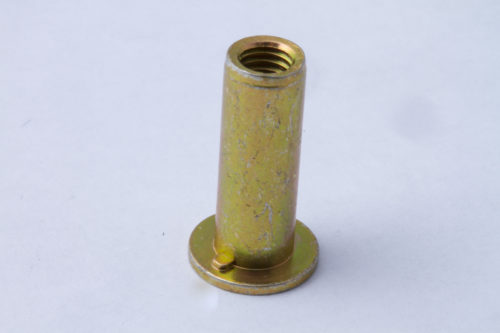
a keyway under the flange helps the grip in this military grade rivet nut
So what’s your choice?
While many flange styles are designed for particular intent, they also contain their drawbacks, so be sure to consider trade-offs when determining your specific needs.
Standard large flanges offer suitable strength, but do not offer flush installation without any further processing. Small flanges provide more flush installation, but decrease parts’ resistance to push-out failure conditions – for an improved flush installation without this issue, countersunk-head rivet nuts are a choice, but also require the ability to process countersunk heads in your material. Wedged heads are ineffective in harder materials, while keyways require further precise processing of your material to fit the part.
While the number of choices may be staggering at times, it all comes down to the critical needs of your overall design. And, of course, for larger solutions, custom designs that deviate away from standard options to fit your exact geometric or performance needs are often viable. This may include modifications to the wideness or the thickness of the flange, or the addition of features like wedges or keyways.
If you’re ever unsure as to what style of flange is best for your specific needs, our engineers are always happy to answer your questions on design or test solutions to find the optimal fit.






